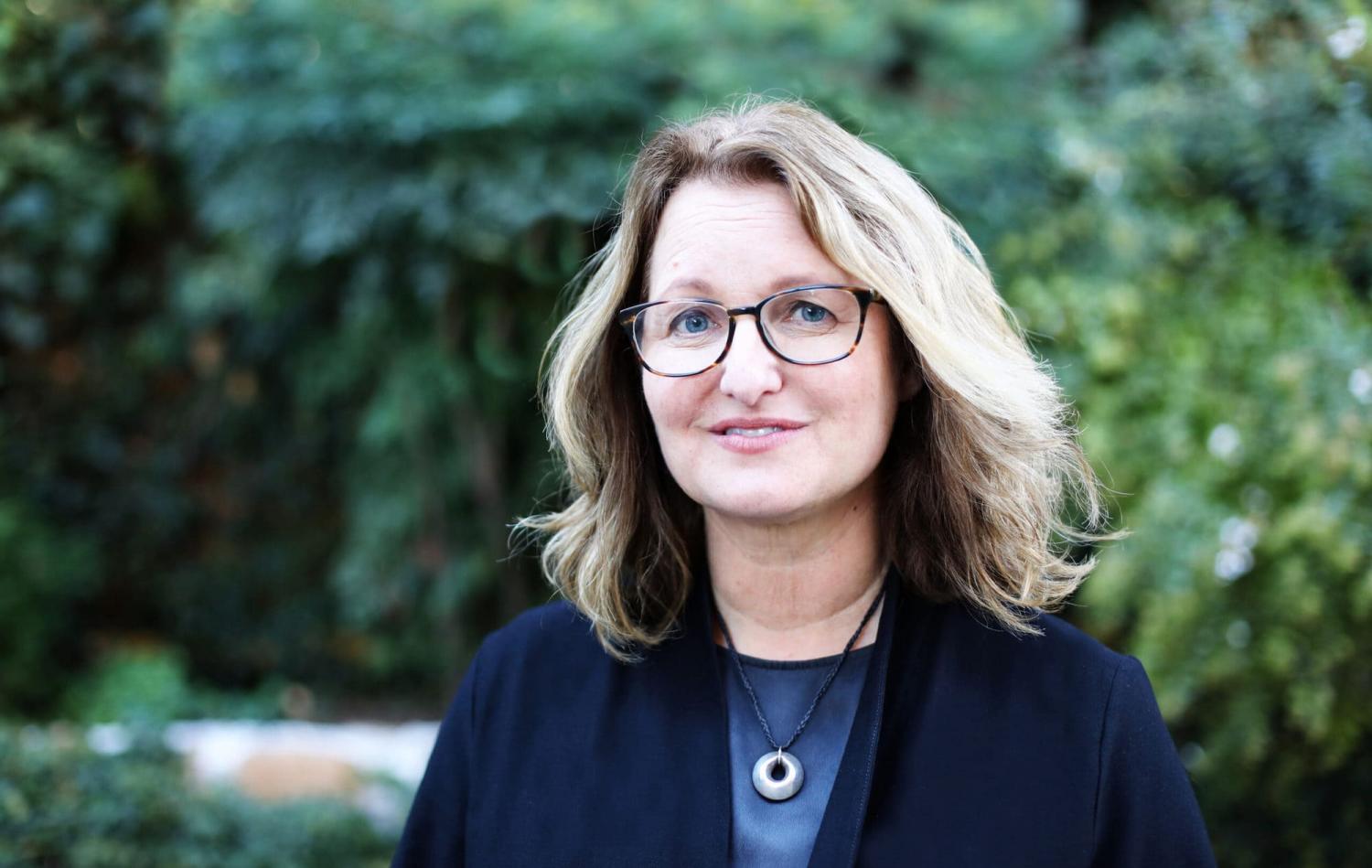Climate change is known to be an existential threat for humanity worldwide. Clear evidence of the challenge is the increasing frequency and severity of extreme weather events, at a high cost to the global economy.
Ambitious climate policies are one thing -- we've heard plenty about them in recent weeks -- but concrete action is another. Without the latter, the world is likely to face a more perilous lose-lose scenario as higher sea levels, extreme precipitation and increased droughts, among others, threaten wellbeing and productivity.
Although the Covid-19 pandemic led to sharp restrictions on mobility, resulting in a 6% decline in global energy-related carbon dioxide emissions, according to the International Energy Agency, the pandemic did not slow or lessen climate change as many people believe.
Viewing lower greenhouse gas emissions and better air quality during lockdowns as a silver lining for the environment is not a good idea, stresses Inger Andersen, head of the United Nations Environment Programme.
In fact, the resumption of economic activity in the Asia Pacific region in the second half of last year pumped out more emissions. By the end of the year, carbon dioxide emissions were 2% higher than pre-pandemic levels, according to Asia-Pacific Economic Cooperation (Apec) forum.
The 21 Apec member economies -- which are home to about 3 billion people or 38% of the world's population and account for 55% of global gross domestic product (GDP) -- are affected to varying degrees, in some cases severely, by climate change. At the same time they have been contributing to climate-related hazards.
Seventy percent of global natural disasters, including record-setting wildfires, floods, droughts and extreme temperatures, occurred in the region this year, Apec researchers point out. Estimates show that climate change costs Apec economies US$100 billion annually. This does not even count the human and social costs.

"If the global community is truly committed to ending hunger and poverty, then it must act now to support smallholder farming communities that are already being hit hard by climate change," says Claudia Sadoff, managing director for research delivery and impact with CGIAR. SUPPLIED
The Apec region is expected to face output losses from an acute climate crisis amounting to 7.3% of GDP by the end of the 21st century, if policies and actions remain weak, according to the World Bank.
Even in the best-case scenario, where the global temperature rise is kept below 2 degrees Celsius relative to pre-industrial levels, the region could still anticipate GDP losses ranging from 0.6% to 4.4% by 2050, according to assessments prepared by the global reinsurer Swiss Re and cited by Apec. The loss balloons to as much as 18% in a worst-case scenario where no action is taken, resulting in a 3.2C rise in global temperatures.
In addition, climate change disproportionately affects vulnerable populations -- the poor, women and girls, indigenous peoples, migrants to people in rural and remote areas.
Holding itself accountable for 60% of the greenhouse gas emissions and 65% of carbon emissions worldwide, the region must reduce greenhouse gas emissions by 900 megatonnes of carbon dioxide equivalent per year until 2030, and by another 470 megatonnes annually from 2031 until net zero is achieved in 2070, while keeping global warming to no more than 2C, an Apec report says.
To keep the temperature change at 1.5C, the region would need to remove the equivalent of the annual emissions of 192 million cars per year for the next 30 years. The number is lower but still massive for the 2C target, at 117 million cars per year for the next 50 years, Emmanuel San Andres, an analyst of Apec Policy Support Unit, told a recent virtual forum held by Apec.
Currently, 19 of the 21 Apec economies have committed to net-zero carbon emissions targets by 2060 or sooner. But Canada, Japan, South Korea and New Zealand are the only ones to have taken the next step -- incorporating net-zero commitments into domestic laws.
Science tells the world how climate change can endanger economies, and the size of emissions reductions needed to keep the planet safe. It cannot, however, advise on the political and economic decisions that are necessary to reach the target.
Ultimately, it's policymakers who can regulate and incentivise the green economy, making it possible to achieve the challenging targets that the science says we must meet.
In short, it's time to emphasise action, not just commitments. A report issued by Apec last month also recommends recognising a holistic approach across a range of areas to tackle climate change; ensuring that implementation of green policies also includes measure to address their potential negative side-effects; prioritising the measurement and analysis of impacts to support effective policy decisions; and strengthening global and regional cooperation.
"We need to strengthen global and regional cooperation and emphasise actions, not just commitments on climate change," said Mr San Andres. "Tackling climate change requires a holistic approach across a range of areas and issues, including ensuring that implementation of green policies addresses its negative side effects."

ACTION AND ADAPTATION
Global efforts in regard to climate issues are no longer focusing only on mitigation and prevention, but shifting to look at how to keep warming within levels that will allow the planet's inhabitants to adapt and survive in the long term.
Policymakers must prioritise climate resilience and adaptation measures to protect vulnerable rural communities in particular from losing economic opportunities and progress, according to the International Fund for Agricultural Development (IFAD).
IFAD has joined forces with rural communities to develop diverse and innovative approaches aimed at adapting to and mitigating the disastrous effects of climate change on livelihoods.
"Small-scale producers know what they need to be more resilient to the effects of climate change," said Kisa Mfalila, regional climate and environment specialist for Asia and Pacific with IFAD. "We can support them by helping them to access the appropriate finance and technology.
"Farmers have developed many successful adaptation techniques over time. We need to act fast to draw upon local knowledge."

"Tackling climate change requires a holistic approach … including ensuring that implementation of green policies addresses its negative side effects," says Emmanuel San Andres, and analyst with the Apec Policy Support Unit. SUPPLIED
Small-scale farmers can quickly adopt innovations if supportive policy frameworks are in place and if the public and the private sectors provide adequate finance and advice, according to IFAD.
During the COP26 climate talks in Glasgow last month, IFAD highlighted the impact of climate change on smallholder farmers. It took its audience on a virtual tour of Bangladesh, where the country's poorest small-scale farmers, who produce 70-80% of the country's food, discussed the projects that have been helping them adapt.
"Bangladesh contributes less than 0.47% of global emissions, yet it is one of the most climate-vulnerable countries in the world," Bangladesh Prime Minister Sheikh Hasina said at COP26. "It is also a leader in climate action, offering several examples of how poor rural communities can adapt to the impacts of climate change, build resilience and restore livelihoods."
IFAD has worked with the Bangladeshi government and other key partners on the Haor Infrastructure and Livelihood Improvement Project-Climate Adaptation and Livelihood Protection project (Hilip-Calip) and other projects, to ensure that farmers have all the tools and infrastructure they need to survive and thrive despite cyclones, droughts, soil erosion and rising water levels.
During the virtual tour, participating farmers from Sunamganj district in the Haor region discussed how frequent and prolonged flooding swept away their homes and cattle, and how it cut off mobility.
"Six months of the year the roads are underwater, which meant I couldn't get to my crops to harvest them or sell them at market," said Lalon, one of the participants. Submersible roads and an early warning system are two of the interventions made by Hilip-Calip to help people adapt.
"I use the submersible road during the pre-monsoon period for transporting and marketing of agricultural and non-agricultural products," said Lalon. "And the early warning system helps us to organise ourselves and harvest before the flood comes and store it in protection shelters."
Participants from Satkhira district, near the Sundarbans -- the world's largest deltaic mangrove forest -- spoke about crab farming adapted to the changing climate in their area. They have been introduced to more saline-tolerant species, making it possible for them to combat the impact of rising sea levels and warming temperatures.

"I am confident that if we all come together and provide the finance necessary, we will be able to have a successful response to climate change," says Donal Brown, associate vice-president of the International Fund for Agricultural Development. SUPPLIED
"I used to be a shrimp farmer but we have been experiencing more natural disasters in this region, which affected shrimp farming and the harvest," said Masum, one of the participants. "I learned that crabs are easier to farm, as they are better able to deal with increased salinity and changing water temperatures."
While progress is being made, the government and people of Bangladesh need more financial and technical support, said Donal Brown, the associate vice-president of IFAD.
"Successful projects really need to be scaled up. I am confident that if we all come together and provide the finance necessary, we will be able to have a successful response to climate change in countries like Bangladesh," he added.
Climate change is a risk multiplier, particularly for the poorest as it derails much of their development progress, increases vulnerability and exacerbates hunger and poverty. Currently, only 3% of global climate finance is targeted toward small-scale agriculture, and only 1.7% reaches small-scale farmers, Mr Brown pointed out.
"The urgency is clear: If the global community is truly committed to ending hunger and poverty, then it must act now to support smallholder farming communities that are already being hit hard by climate change," said Claudia Sadoff, managing director for research delivery and impact at the Consultative Group on International Agricultural Research (CGIAR), which unites international organisations engaged in research about food security.
"There is still a large gap between the magnitude of the climate threat to smallholder farmers and investments required to help them adapt," she said.
"Adaptation in agriculture is about pursuing a greener pathway," Ms Sadoff said. Farmers should be equipped with technologies that allow them to grow more food with less water and restore degraded landscapes through holistic strategies for food production and ecosystem services, she added.

CLIMATE FINANCE
According to a recent IFAD report titled Building Climate Resilience in the Asia Pacific Region, the organisation has invested $305 million in targeted rural development projects that needed support in adapting and mitigating the impacts of climate change.
From 2012 to 2017, an the IFAD-supported Adaptation for Smallholder Agricultural Programme (Asap) aided more than 510,000 small-scale farming households to adapt to climate change in Bangladesh, Bhutan, Cambodia, Laos, Nepal and Vietnam.
IFAD is working on the new phase of the programme, called Asap+, hoping to channel an additional $500 million in climate finance to help 10 million vulnerable people, particularly women and youth.
Climate threats to smallholder farmers have stimulated new investments in research, pushing 2021 pledges close to $1 billion, according to CGIAR.
"This critical investment surge is a welcome down-payment for accelerating CGIAR's climate adaptation efforts that already are providing millions of farmers with innovations like stress-tolerant crop varieties and new strategies to restore degraded lands," said Kundhavi Kadiresan, managing director for global engagement and innovation at CGIAR.

"Farmers have developed many successful adaptation techniques over time. We need to act fast to draw upon local knowledge," says Kisa Mfalila, regional climate and environment specialist with the International Fund for Agricultural Development. SUPPLIED
According to CGIAR, the Bill & Melinda Gates Foundation has pledged $315 million over the next three years to support the group's climate-related work. Half of the budget will go to climate adaptation innovations that will flow more rapidly to smallholder farmers.
The United States Agency for International Development (USAID) pledged $215 million over the next five years. Canada and Sweden have agreed to contribute $45 million and $18 million respectively, while Belgian legislators are scrutinising a proposed $14-million commitment.
The European Commission, the Netherlands and Belgium also announced pledges totalling $256 million at Global Citizen Live, which brought together some of the world's top entertainers in September to draw attention tom climate issues.
The US contribution is aimed at improving agricultural productivity for 200 million people in South Asia and Sub-Saharan Africa by 2030, said Dr Jim Barnhart, assistant to the administrator at the USAID Bureau for Resilience and Food Security.
In recent years, CGIAR partnerships have provided approximately 8 million farming households with 200 varieties of climate-smart maize and about 18 million farmers with new varieties of flood- and salt-tolerant rice.
CGIAR is also leading efforts to integrate a large number of low-emission, aquaculture and climate-smart food production practices across a network of climate-smart communities in Africa, Asia and Latin America to improve diets and generate more income.
COP26 also served as a launchpad for the new Agriculture Innovation Mission for Climate or AIM4C formed by the US and the United Arab Emirates (UAE). Encompassing more than 30 countries to date, the coalition aims to generate new funding for breakthrough agriculture research, international partnerships and national agricultural research systems in low-income countries, according to CGIAR.
Organisers envision a series of "innovation sprints" -- projects that are primed to transform new investments into immediate impact for smallholder farmers.
One such $40-million project will unlock key climate-resilient traits for crops from CGIAR's global gene bank and supply the raw materials farmers need to grow a wide variety of climate-smart crops.